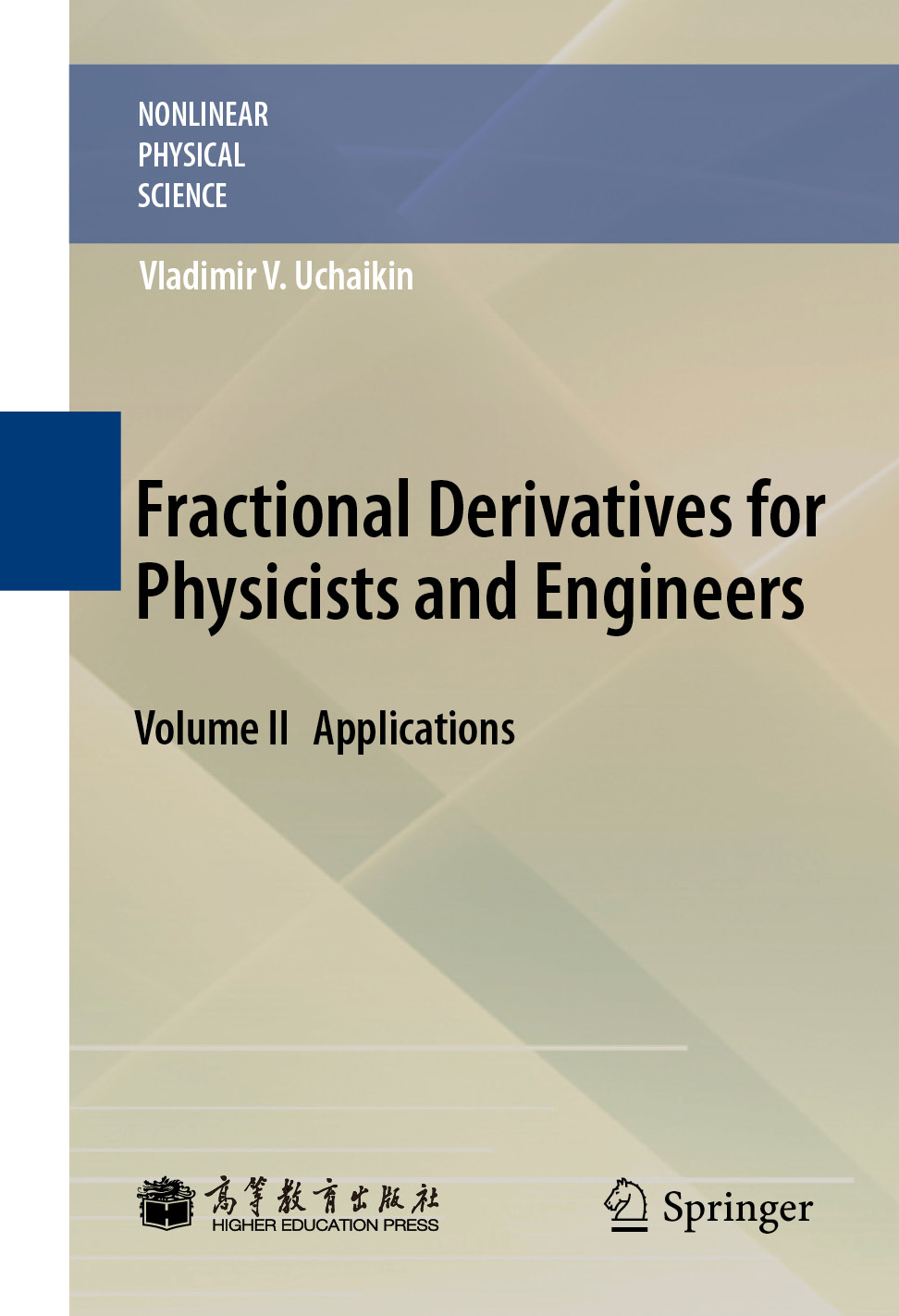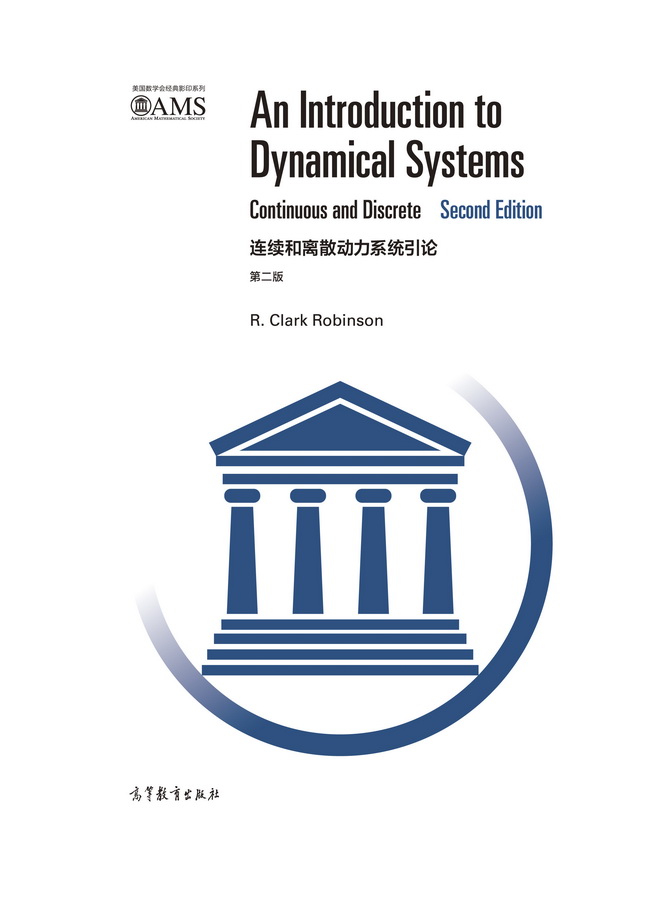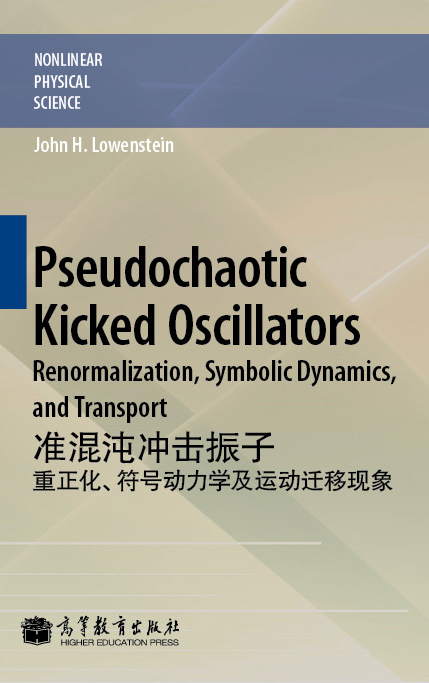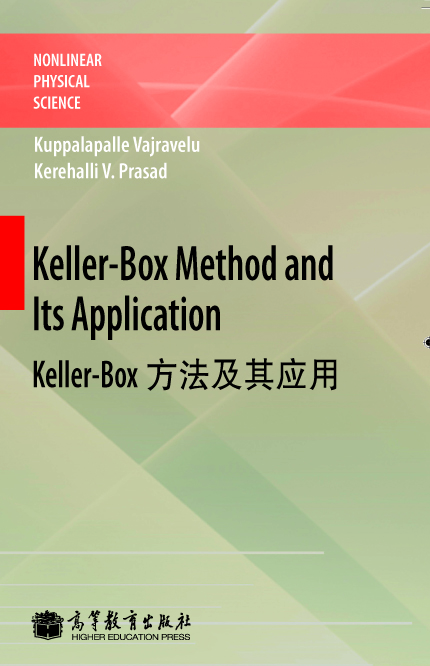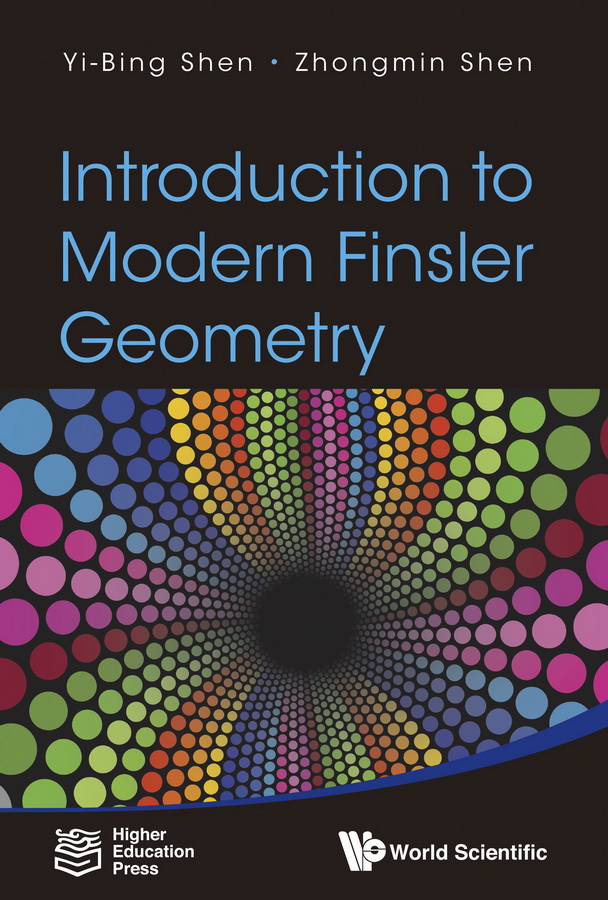物理及工程中的分数维微积分:第II卷 应用(英文版)
作者: Vladimir V.Uchaikin
出版时间:2013-01
出版社:高等教育出版社
- 高等教育出版社
- 9787040307344
- 1版
- 227512
- 48266029-7
- 精装
- 16开
- 2013-01
- 550
- 460
- 理学
- 数学类
- O172
- 数学
- 研究生及以上
《物理及工程中的分数维微积分: 第II卷 应用(英文版)》一个运动质点位置函数的一阶导数表示速度,二阶导数表示加速度,那么分数阶导数的物理意义又是什么呢?分数阶导数是因何而产生,它对现代 分析学在物理学的应用产生什么冲击,在将来又有什么发展?《物理及工程中的分数维微积分》二卷本将为你提供一个详细诠释。
《物理及工程中的分数维微积分: 第II卷 应用(英文版)》由Vladimir V. Uchaikin著,本书的第Ⅰ卷介绍分数维微积分的数学基础和相应的理论,为这个现代分析学中的重要分支提供了详细而义清晰的分析与介绍。第Ⅱ卷是应用 篇,讲述了分数维微积分在物理学中的实际的应用。在湍流与半导体、等离子与热力学、力学与量子光学、纳米物理学与天体物理学等学科应用方面,本书给读者展 示一个全新的处理方式和新锐的视角。
《物理及工程中的分数维微积分: 第II卷 应用(英文版)》适合于对概率和统计、数学建模和数值模拟方面感兴趣的学生、工程师、物理学家以及其他专家和学者,以及任何不想错过与这个越来越流行的数学方法接触的读者。
Front Matter
7 Mechanics
7.1 Tautochrone problem
7.1.1 Non-relativistic case
7.1.2 Relativistic case
7.2 Inverse problems
7.2.1 Finding potential from a period-energy dependence
7.2.2 Finding potential from scattering data
7.2.3 Stellar systems
7.3 Motion through a viscous fluid
7.3.1 Entrainment of fluid by a moving wall
7.3.2 Newton's equation with fractional term
7.3.3 Solution by the Laplace transform method
7.3.4 Solution by the Green functions method
7.3.5 Fractionalized fall process
7.4 Fractional oscillations
7.4.1 Fractionalized harmonic oscillator
7.4.2 Linear chain of fractional oscillators
7.4.3 Fractionalized waves
7.4.4 Fractionalized Frenkel-Kontorova model
7.4.5 Oscillations of bodies in a viscous fluid
7.5 Dynamical control problems
7.5.1 PID controller and its fractional generalization
7.5.2 Fractional transfer functions
7.5.3 Fractional optimal control problem
7.6 Analytical fractional dynamics
7.6.1 Euler-Lagrange equation
7.6.2 Discrete system Hamiltonian
7.6.3 Potentials of non-concervative forces
7.6.4 Hamilton-Jacobi mechanics
7.6.5 Hamiltonian formalism for field theory
References
8 Continuum Mechanics
8.1 Classical hydrodynamics
8.1.1 A simple hydraulic problem
8.1.2 Liquid drop oscillations
8.1.3 Sound radiation
8.1.4 Deep water waves
8.2 Turbulent motion
8.2.1 Kolmogorov's model of turbulence
8.2.2 From Kolmogorov's hypothesis to the space-fractional equation
8.2.3 From Boltzmann's equation to the time-fractional telegraph one
8.2.4 Turbulent diffusion in a viscous fluid
8.2.5 Navier-Stokes equation
8.2.6 Reynolds' equation
8.2.7 Diffusion in lane flows
8.2.8 Subdiffusion in a random compressible flow
8.3 Fractional models of viscoelasticity
8.3.1 Two first models of fractional viscoelasticity
8.3.2 Fractionalized Maxwell model
8.3.3 Fractionalized Kelvin-Voigt model
8.3.4 Standard model and its generalization
8.3.5 Bagley-Torvik model
8.3.6 Hysteresis loop
8.3.7 Rabotnov's model
8.3.8 Compound mechanical models
8.3.9 The Rouse model of polymers
8.3.10 Hamiltonian dynamic approach
8.4 Viscoelastic fluids motion
8.4.1 Gerasimov's results
8.4.2 El-Shahed-Salem solutions
8.4.3 Fractional Maxwell fluid: plain flow
8.4.4 Fractional Maxwell fluid: longitudinal flow in a cylinder
8.4.5 Magnetohydrodynamic flow
8.4.6 Burgers' equation
8.5 Solid bodies
8.5.1 Viscoelastic rods
8.5.2 Local fractional approach
8.5.3 Nonlocal approach
References
9 Porous Media
9.1 Diffusion
9.1.1 Main concepts of anomalous diffusion
9.1.2 Granular porosity
9.1.3 Fiber porosity
9.1.4 Filtration
9.1.5 MHD flow in porous media
9.1.6 Advection-diffusion model
9.1.7 Reaction-diffusion equations
9.2 Fractional acoustics
9.2.1 Lokshin-Suvorova equation
9.2.2 Schneider-Wyss equation
9.2.3 Matignon et al. equation
9.2.4 Viscoelastic loss operators
9.3 Geophysical applications
9.3.1 Water transport in unsaturated soils
9.3.2 Seepage flow
9.3.3 Foam Drainage Equation
9.3.4 Seismic waves
9.3.5 Multi-degree-of-freedom system of devices
9.3.6 Spatial-temporal distribution of aftershocks
References
10 Thermodynamics
10.1 Classical heat transfer theory
10.1.1 Heat flux through boundaries
10.1.2 Flux through a spherical surface
10.1.3 Splitting inhomogeneous equations
10.1.4 Heat transfer in porous media
10.1.5 Hyperbolic heat conduction equation
10.1.6 Inverse problems
10.2 Fractional heat transfer models
10.2.1 Fractional heat conduction laws
10.2.2 Fractional equations for heat transport
10.2.3 Application to thermoelasticity
10.2.4 Some irreversible processes
10.3 Phase transitions
10.3.1 Ornstein-Zernicke equation
10.3.2 Fractional Ginzburg-Landau equation
10.3.3 Classification of phase transitions
10.4 Around equilibrium
10.4.1 Relaxation to the thermal equilibrium
10.4.2 Fractionalization of the entropy
References
11 Electrodynamics
11.1 Electromagnetic field
11.1.1 Maxwell equations
11.1.2 Fractional multipoles
11.1.3 A link between two electrostatic images
11.1.4 ``Intermediate'' waves
11.2 Optics
11.2.1 Fractional differentiation method
11.2.2 Wave-diffusion model of image transfer
11.2.3 Superdiffusion transfer
11.2.4 Subdiffusion and combined (bifractional) diffusion transfer models
11.3 Laser optics
11.3.1 Laser beam equation
11.3.2 Propagation of laser beam through fractal medium
11.3.3 Free electron lasers
11.4 Dielectrics
11.4.1 Phenomenology of relaxation
11.4.2 Cole-Cole process rm : macroscopic view
11.4.3 Microscopic view
11.4.4 Memory phenomenon
11.4.5 Cole-Davidson process
11.4.6 Havriliak-Negami process
11.5 Semiconductors
11.5.1 Diffusion in semiconductors
11.5.2 Dispersive transport: transient current curves
11.5.3 Stability as a consequence of self-similarity
11.5.4 Fractional equations as a consequence of stability
11.6 Conductors
11.6.1 Skin-effect in a good conductor
11.6.2 Electrochemistry
11.6.3 Rough surface impedance
11.6.4 Electrical line
11.6.5 Josephson effect
References
12 Quantum Mechanics
12.1 Atom optics
12.1.1 Atoms in an optical lattice
12.1.2 Laser cooling of atoms
12.1.3 Atomic force microscopy
12.2 Quantum particles
12.2.1 Kinetic-fractional Sch "o dinger equation
12.2.2 Potential-fractional Schr "o dinger equation
12.2.3 Time-fractional Schr "o dinger equation
12.2.4 Fractional Heisenberg equation
12.2.5 The fine structure constant
12.3 Fractons
12.3.1 Localized vibrational states (fractons)
12.3.2 Weak fracton excitations
12.3.3 Non-linear fractional Shr "o dinger equation
12.3.4 Fractional Ginzburg-Landau equation
12.4 Quantum dots
12.4.1 Fluorescence of nanocrystals
12.4.2 Binary model
12.4.3 Fractional transport equations
12.4.4 Quantum wires
12.5 Quantum decay theory
12.5.1 Krylov-Fock theorem
12.5.2 Weron-Weron theorem
12.5.3 Nakhushev fractional equation
References
13 Plasma Dynamics
13.1 Resonance radiation transport
13.1.1 A role of the dispersion profile
13.1.2 Fractional Biberman-Holstein equation
13.1.3 Fractional Boltzmann equation
13.2 Turbulent dynamics of plasma
13.2.1 Diffusion in plasma turbulence
13.2.2 Stationary states and fractional dynamics
13.2.3 Perturbative transport
13.2.4 Electron-acoustic waves
13.3 Wandering of magnetic field lines
13.3.1 Normal diffusion model
13.3.2 Shalchi-Kourakis equations
13.3.3 Theoretical evidence of superdiffusion wandering
13.3.4 Fractional Brownian motion for simulating magnetic lines
13.3.5 Compound model
References
14 Cosmic Rays
14.1 Unbounded anomalous diffusion
14.1.1 Space-fractional equation for cosmic rays diffusion
14.1.2 The ``knee''-problem
14.1.3 Trapping CR by stochastic magnetic field
14.1.4 Bifractional anomalous CR diffusion
14.2 Bounded anomalous diffusion
14.2.1 Fractal structures and finite speed
14.2.2 Equations of the bounded anomalous diffusion model
14.2.3 The bounded anomalous diffusion propagator
14.3 Acceleration of cosmic rays
14.3.1 CR reacceleration
14.3.2 Fractional kinetic equations
14.3.3 Fractional Fokker-Planck equations
14.3.4 Integro-fractionally-differential model
References
15 Closing Chapter
15.1 The problem of interpretation
15.2 Geometrical interpretation
15.2.1 Shadows on a fence
15.2.2 Tangent vector and gradient
15.2.3 Fractals and fractional derivatives
15.3 Fractal and other derivatives
15.3.1 Fractal derivative
15.3.2 New fractal derivative
15.3.3 Generalized fractional Laplaian
15.3.4 Fractional derivatives in q-calculus
15.3.5 Fuzzy fractional operators
15.4 Probabilistic interpretation
15.4.1 Probabilistic view on the G-L derivative
15.4.2 Stochastic interpretation of R-L integral
15.4.3 Fractional powers of operators
15.5 Classical mechanic interpretation
15.5.1 A car with a fractional speedometer
15.5.2 Dynamical systems
15.5.3 Coarse-grained-time dynamics
15.5.4 Gradient systems
15.5.5 Chaos kinetics
15.5.6 Continuum mechanics
15.5.7 Viscoelasticity
15.5.8 Turbulence
15.5.9 Plasma
15.6 Quantum mechanic interpretations
15.6.1 Feynman path integrals
15.6.2 Lippmann-Schwinger equation
15.6.3 Time-fractional evolution operator
15.6.4 A role of environment
15.6.5 Standard learning tasks
15.6.6 Fractional Laplacian in a bounded domain
15.6.7 Application to nuclear physics problems
15.7 Concluding remarks
15.7.1 Hidden variables
15.7.2 Complexity
15.7.3 Finishing the book
References
Appendix A Some Special Functions
A.1 Gamma function and binomial coefficients
A.1.1 Gamma function
A.1.2 Three integrals
A.1.3 Binomial coefficients
A.2 Mittag-Leffler functions
A.2.1 Mittag-Leffler functions $E_ alpha (z), E_ alpha , beta (z)$
A.2.2 The Miller-Ross functions
A.2.3 Functions $C_x( nu ,a)$ and $S_x( nu ,a)$
A.2.4 The Wright function
A.2.5 The Mainardi functions
A.3 The Fox functions
A.3.1 Definition
A.3.2 Some properties
A.3.3 Some special cases
A.4 Fractional stable distributions
A.4.1 Introduction
A.4.2 Characteristic function
A.4.3 Inverse power series representation
A.4.4 Integral representation
A.4.5 Fox function representation
A.4.6 Multivariate fractional stable densities
References
Apendix B Fractional Stable Densities
Appendix C Fractional Operators: Symbols and Formulas
Index
版权

